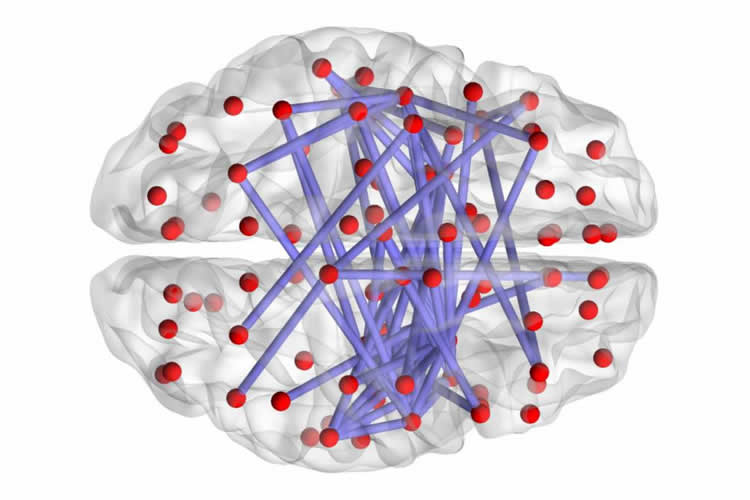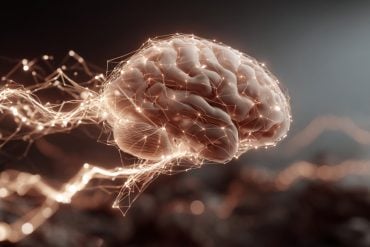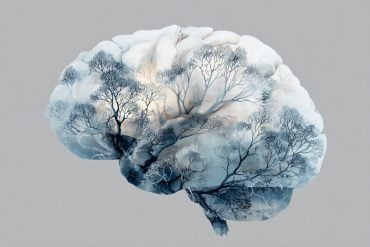Summary: Study sheds light on how the brain coordinates complex decision involving empathy and altruism.
Source: Duke.
Communication within the brain is key to empathetic decision-making.
It’s a classic conundrum: while rushing to get to an important meeting or appointment on time, you spot a stranger in distress. How do you decide whether to stop and help, or continue on your way?
A new study by neuroscientists at Duke and Stanford University sheds light on how the brain coordinates these complex decisions involving altruism and empathy. The answer lies in the way multiple areas of the brain collaborate to produce the decision, rather than just one area or another making the call.
“The brain is more than just the sum of its individual parts,” said Jana Schaich Borg, assistant research professor in the Social Science Research Institute and the Center for Cognitive Neuroscience at Duke.
Using a technique that combines electrical monitoring of brain activity with machine learning, the team was able to tune into the brain chatter of rats engaged in helping other rats.
They found that regions deep within the brain — those primarily responsible for emotions and basic bodily functions — are core to empathic decision-making. The specific role of each brain area is not fixed, but can change depending on which other areas it is communicating with, and what specific messages it is receiving, according to Schaich Borg.
“We know that there are many brain regions that seem to do multiple things, sometimes at the same time, but we don’t know how the brain pulls that off,” Schaich Borg said.
“One idea is that the function a brain region plays at a specific time could be determined by what it is connected to at that time, what other brain regions are doing at that time, and how brain regions are talking to each other at that time,” Schaich Borg said. “Some people have called this hypothetical phenomenon ‘neural context,’ and we’ve found concrete evidence for that.”
The results clarify earlier conflicting findings on the role of specific brain regions, such as the insula, in guiding antisocial and psychopathic behavior, and may shed light on how to encourage altruistic behavior in humans.
The study appears in the June issue of Brain and Behavior.
Schaich Borg began this research as a graduate student at Stanford, where she was driven to understand the neurological basis of empathy in hopes of finding better treatments for conditions like psychopathy, in which people seem unable to experience empathy at all.
“I wanted to understand what makes someone help someone else, or what makes someone refrain from hurting another person even when they don’t like them,” Schaich Borg said. Ethical and practical considerations can make it tricky to study the neural mechanisms of this type of decision-making in human subjects. So working with then-advisor Luis de Lecea, she devised an experiment to elicit empathetic decision-making in rats.
Rats generally dislike bright lights, preferring to stay in places that are dark or dimly lit, Schaich Borg said. But she found that when given a choice, most rats would enter a brightly-lit chamber if it could prevent another rat from receiving an electrical shock.
A series of molecular tests pinpointed which regions of the brain were active while the rats made these decisions. “The brain regions that encoded what the rat was choosing to do were the same ones we found in other studies to be involved in human empathy and moral decision making,” Schaich Borg said. “It’s fascinating that rats are using the same brain regions that we seem to be using, and it suggests that rats provide a promising avenue for better understanding the way the human brain makes decisions to help others.”
But the results were also confusing in some ways. Specific areas of the brain, such as the amygdala or the insula, appeared to be increasingly active the more rats chose to help, but these same brain regions were also known to be involved in many other behaviors that had nothing to do with social behavior.
To get a deeper view of how the rats’ brains coordinated empathic decision-making, Schaich Borg became a postdoctoral researcher in the lab of Kafui Dzirasa, assistant professor of psychiatry and behavioral sciences at Duke. Dzirasa had developed a way of simultaneously tuning into electrical signals from multiple points of the brains of awake, behaving rodents. Careful analysis of these signals can reveal not only which parts of the brain are activated, but also how different areas of the brain talk to each other.

Schaich Borg applied this technique to her rats, recording the activity within 10 specific brain regions while also searching for signs of oscillatory “coherence” or communication between each of the regions as the rats were making decisions about how to respond to other rats getting shocked. Collaborating with statisticians, she then used machine learning techniques to correlate the vast array of brain data with the rats’ behaviors.
“We found that you cannot describe the behavior as well with single brain regions as you can by looking at coherence, or connections between different brain regions,” Schaich Borg said.
The results help explain conflicting roles the insula has been found to play in human psychopathy and addiction. “Perhaps the insula facilitates certain social behaviors when it is talking a group of brain regions in one way, but inhibits those same behaviors when it is talking to the same brain regions in a different way,” Schaich Borg said.
“Our results confirm that if you just look at one brain region at a time, you likely will not be getting the full story of how the mind works,” she said. “To understand how the brain coordinates complex behaviors — especially social behaviors — we likely have to look at the changing inputs and outputs of individual regions in different situations.”
Funding: This research was supported by a National Science Foundation Graduate Fellowship, the Imitatio Foundation, an Information Initiative at Duke Research Incubator Award, the One Mind Institute (IMHRO) Rising Star Award, the National Institutes of Health (R01MH102638) and the NARSAD Distinguished Scientist Award.
Source: Kara Manke – Duke
Image Source: NeuroscienceNews.com image is credited to Soon-Beom Hong, PLOS One.
Original Research: Full open access research for “Rat intersubjective decisions are encoded by frequency-specific oscillatory context” by Jana Schaich Borg, Sanvesh Srivastava, Lizhen Lin, Joseph Heffner, David Dunson, Kafui Dzirasa and Luis de Lecea in Brain and Behavior. Published online May 5 2017 doi:10.1002/brb3.710
[cbtabs][cbtab title=”MLA”]Duke “Chatter in the Deep Brain Spurs Empathy in Rats.” NeuroscienceNews. NeuroscienceNews, 23 June 2017.
<https://neurosciencenews.com/deep-brain-empathy-6967/>.[/cbtab][cbtab title=”APA”]Duke (2017, June 23). Chatter in the Deep Brain Spurs Empathy in Rats. NeuroscienceNew. Retrieved June 23, 2017 from https://neurosciencenews.com/deep-brain-empathy-6967/[/cbtab][cbtab title=”Chicago”]Duke “Chatter in the Deep Brain Spurs Empathy in Rats.” https://neurosciencenews.com/deep-brain-empathy-6967/ (accessed June 23, 2017).[/cbtab][/cbtabs]
Abstract
Rat intersubjective decisions are encoded by frequency-specific oscillatory context
Introduction
It is unknown how the brain coordinates decisions to withstand personal costs in order to prevent other individuals’ distress. Here we test whether local field potential (LFP) oscillations between brain regions create “neural contexts” that select specific brain functions and encode the outcomes of these types of intersubjective decisions.
Methods
Rats participated in an “Intersubjective Avoidance Test” (IAT) that tested rats’ willingness to enter an innately aversive chamber to prevent another rat from getting shocked. c-Fos immunoreactivity was used to screen for brain regions involved in IAT performance. Multi-site local field potential (LFP) recordings were collected simultaneously and bilaterally from five brain regions implicated in the c-Fos studies while rats made decisions in the IAT. Local field potential recordings were analyzed using an elastic net penalized regression framework.
Results
Rats voluntarily entered an innately aversive chamber to prevent another rat from getting shocked, and c-Fos immunoreactivity in brain regions known to be involved in human empathy—including the anterior cingulate, insula, orbital frontal cortex, and amygdala—correlated with the magnitude of “intersubjective avoidance” each rat displayed. Local field potential recordings revealed that optimal accounts of rats’ performance in the task require specific frequencies of LFP oscillations between brain regions in addition to specific frequencies of LFP oscillations within brain regions. Alpha and low gamma coherence between spatially distributed brain regions predicts more intersubjective avoidance, while theta and high gamma coherence between a separate subset of brain regions predicts less intersubjective avoidance. Phase relationship analyses indicated that choice-relevant coherence in the alpha range reflects information passed from the amygdala to cortical structures, while coherence in the theta range reflects information passed in the reverse direction.
Conclusion
These results indicate that the frequency-specific “neural context” surrounding brain regions involved in social cognition encodes outcomes of decisions that affect others, above and beyond signals from any set of brain regions in isolation.
“Rat intersubjective decisions are encoded by frequency-specific oscillatory context” by Jana Schaich Borg, Sanvesh Srivastava, Lizhen Lin, Joseph Heffner, David Dunson, Kafui Dzirasa and Luis de Lecea in Brain and Behavior. Published online May 5 2017 doi:10.1002/brb3.710







